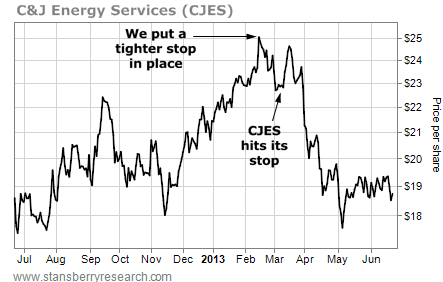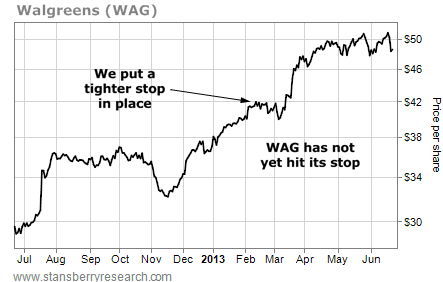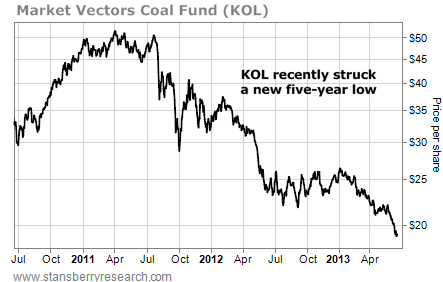Shares of Rockwood Holdings (ROC) traded with modest gains in Monday's trading session following the announcement of the divestiture of its ceramic business.
The company continues with its strategic transformation, which has already created a lot of value for its shareholders. Shares continue to trade at fair valuation multiples while the proceeds from the divestiture leave room for potential gifts to shareholders which could propel shares higher.
The Deal
Rockwood announced that is has entered into a definitive agreement to sell CeramTec, its ceramic business, to private equity firm Cinven. The European private equity firm will pay 1.49 billion euro for the business, the equivalent of $1.98 billion.
CeramTec which is based in Germany employs some 3,000 workers which supply its global customers through 18 facilities across the globe. The business holds strong market positions in niche markets for medical products, cutting tools and mechanical applications.
CEO and Chairman Seife Ghasemi commented on the rationale behind the divestiture:
"Successful execution of this transaction at an attractive multiple will bring Rockwood one significant step closer to our strategic objective and commitment to become a more focused specialty chemical company with a growth portfolio that best maximizes value and returns for our shareholders."
The ceramics unit generated annual revenues of $546.7 million for 2012, down 6.6% as reported, but up slightly in constant currencies. The unit reported a 4.8% decline in Adjusted EBITDA to $174.8 million.
The deal values the unit at 3.6 times annual revenues and 11-12 times adjusted EBITDA.
Cinven has already arranged financing for the transaction. The deal is expected to close in the third quarter of this year, following regulatory approval and permission from the EU Competition Clearance Authority.
Valuation
Rockwood ended its first quarter of 2013 with $491.1 million in cash and equivalents.! The company operates with $2.22 billion in short and long term debt, for a net debt position of around $1.73 billion.
The company generated annual revenues of $3.51 billion, down 4.4% on the year before. The company reported a 9.7% decline in adjusted EBITDA which came in at $778.9 million and net income of $383.5 million.
Factoring in the modest gains on Monday, with shares trading around $67 per share, the market values Rockwood at $5.2 billion. This values the firm's equity at 1.5 times annual revenues and 13-14 times annual earnings.
Rockwood currently pays a quarterly dividend of $0.40 per share, for an annual dividend yield of 2.4%.
Some Historical Perspective
Rockwood which was owned by KKR went public back in 2005. Shares roughly doubled from levels around $20 per share to highs of $40 in 2008. The financial crisis send shares to levels below $5 in 2009.
Shares steadily recovered to peak at $60 in 2011, and have seen modest returns ever since as shares are exchanging hands around all time highs of $67 at the moment.
Between 2009 and 2012, Rockwood increased its annual revenues by a cumulative 27% to $3.5 billion. Net earnings rose from merely $21 million to $383.5 million over the past year.
Investment Thesis
It seems that Rockwood has made a more than fair deal. By divesting CeramTec the company is shrinking its annual revenues by some 15%, and its adjusted EBITDA by 22%. In return it receives gross proceeds equivalent to 38% of its current market valuation and 29% of its enterprise value.
The selling price values CeramTec at 3.6 times annual revenues compared to an overall valuation of 1.5 times revenues. The unit is valued at 11-12 times annual EBITDA, compared to 6.7 times for the company itself.
While shareholders could expect some short term dilution, Rockwood is committed to create shareholder value. Rockwood receives enough cash to pay down its entire net debt position, thereby saving $86.7 million in interest expenses ov! er the pa! st year. More likely is the combination of debt reduction, a dividend hike and/or a repurchase of its own shares. The company could potentially make acquisitions boosting its core operations.
Last year I took a look at Rockwood's prospects when it acquired Talison Lithium. I concluded that it might be worthwhile for long term investors to do their research, after the company made a strategic acquisition in a long term growth industry. Rockwood continues to transform the business, thereby creating shareholder value with shares trading around all time highs.
From that point in time, back in August of 2012, shares have risen some 40% and they continue to trade at fair valuation levels. The prospects for short to medium term gifts to shareholders appear really good. The positive effects from the solid proceeds from the ceramic business could propel shares forward to fresh all time highs in the coming periods.
Disclosure: I have no positions in any stocks mentioned, and no plans to initiate any positions within the next 72 hours. I wrote this article myself, and it expresses my own opinions. I am not receiving compensation for it (other than from Seeking Alpha). I have no business relationship with any company whose stock is mentioned in this article. (More...)






